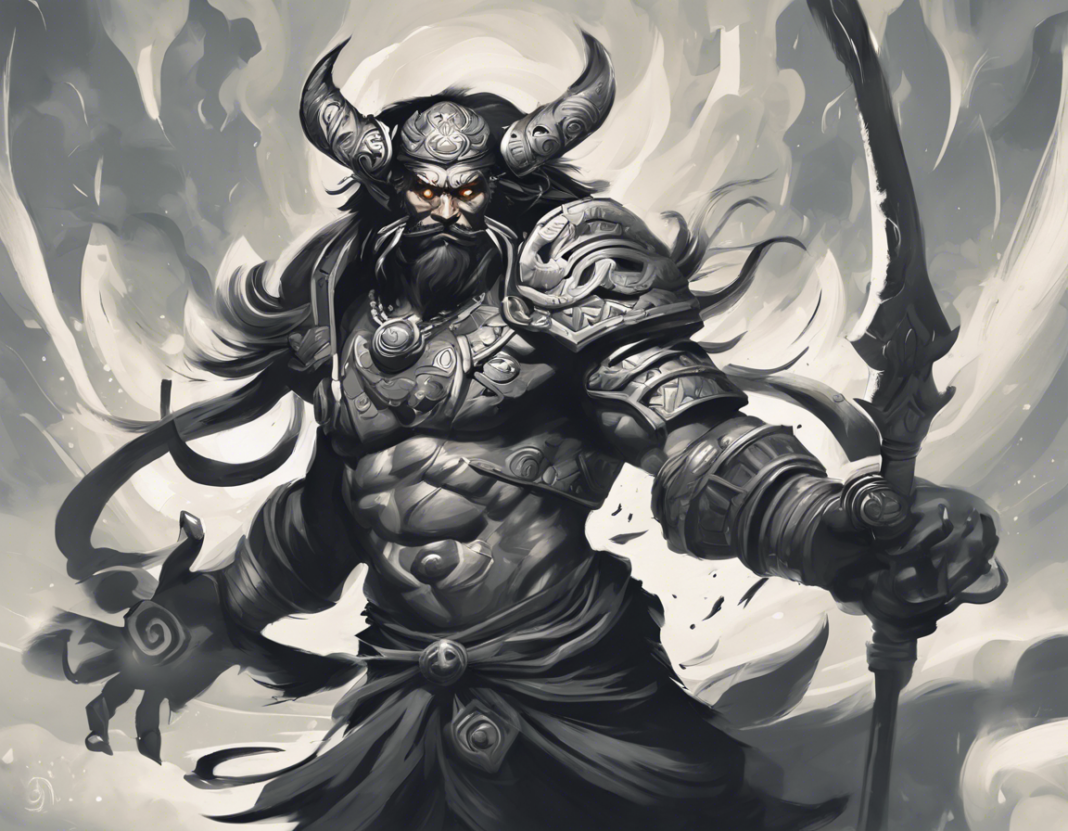In Hindu mythology, Skanda is known as the god of war, also referred to as Kartikeya, Murugan, or Subrahmanya. He is the son of Lord Shiva and Goddess Parvati, and is often depicted as a youthful deity riding a peacock and wielding various weapons like a spear or a sword. Skanda is a popular deity in South India, especially in the states of Tamil Nadu, Kerala, and Karnataka, where elaborate temples and festivals are dedicated to him.
The Birth of Skanda
The story of Skanda’s birth is both fascinating and unique. When the demon Taraka was wreaking havoc on the world, the gods realized that only Shiva and Parvati’s child would be able to defeat him. However, due to Shiva’s deep state of meditation, he was unaware of the chaos unfolding. To arouse him from his trance, the gods sent the god of love, Kama, to shoot an arrow at Shiva. This act disrupted Shiva’s meditation, and he later opened his third eye, reducing Kama to ashes. Parvati, impressed by Kama’s sacrifice, decided to undertake great austerities to win Shiva’s hand in marriage. Eventually, her dedication paid off, and they were married. Skanda was born from the sparks that flew from Shiva’s third eye when he opened it in anger at Taraka.
Significance of Skanda
Skanda is often associated with qualities such as courage, wisdom, and leadership. He is also seen as a philosopher-warrior who provides spiritual guidance to his devotees. Skanda is believed to be an embodiment of beauty and power, and his blessings are sought to overcome obstacles and enemies. Devotees also worship him for protection, especially during times of war or conflict, as he is considered the commander of the army of the gods.
Depiction and Symbolism
Skanda is generally depicted as a handsome young man with six heads, representing the six faces of wisdom. He rides a peacock, which is his vahana (vehicle), symbolizing subduing the ego and controlling our desires. Skanda’s various weapons, such as the spear or vel, represent his ability to destroy negativity and evil forces. His mantra, “Om Saravanabhavaya Namah,” is chanted by devotees to seek his blessings.
Temples and Festivals
Skanda is worshipped in numerous temples across India, with some of the most famous ones being the Palani Murugan Temple in Tamil Nadu, the Swamimalai Murugan Temple in Kumbakonam, and the Sabarimala Temple in Kerala. These temples attract millions of devotees during festivals like Thaipusam and Kartikeya Deepam, during which elaborate rituals and processions are carried out in honor of Skanda.
FAQs about Skanda
1. Who is Skanda, and what is his significance?
Skanda is the god of war in Hindu mythology and is also known as Kartikeya, Murugan, or Subrahmanya. He is the son of Lord Shiva and Goddess Parvati, and he symbolizes courage, wisdom, and leadership.
2. What is the story of Skanda’s birth?
Skanda was born from the sparks that flew from Shiva’s third eye when he opened it in anger at the demon Taraka who was wreaking havoc on the world. Parvati undertook great austerities to win Shiva’s hand in marriage, leading to Skanda’s birth.
3. What are some symbols associated with Skanda?
Skanda is often depicted riding a peacock, wielding a spear or sword, and with six heads, each representing a facet of wisdom. His vahana represents subduing the ego, while his weapons symbolize his power to destroy negativity.
4. Where are some famous temples dedicated to Skanda located?
Some of the most famous temples dedicated to Skanda include the Palani Murugan Temple in Tamil Nadu, the Swamimalai Murugan Temple in Kumbakonam, and the Sabarimala Temple in Kerala. These temples attract devotees from all over the world.
5. Why do people worship Skanda?
People worship Skanda for his blessings of courage, wisdom, and protection. His guidance is sought in overcoming obstacles and enemies, making him a popular deity during times of war or conflict.
In conclusion, Skanda holds a special place in Hindu mythology as the god of war and wisdom. His stories and symbols not only inspire courage and strength but also remind us of the importance of overcoming obstacles with grace and determination. Devotees continue to seek his blessings in their quests for personal growth and spiritual enlightenment.
